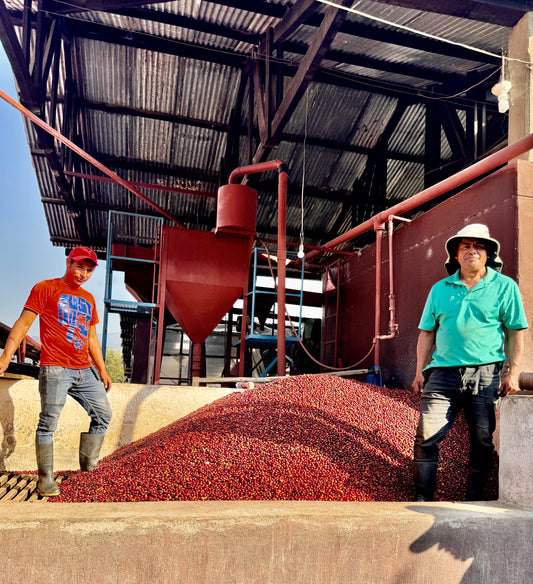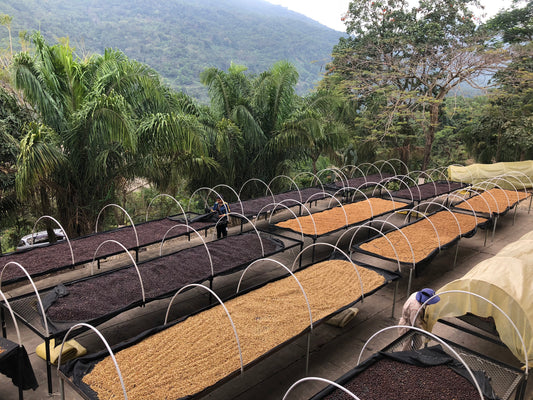Costa Rican Coffee Micro-mill Revolution

I guess I’m a slow learner because it took me 4 days of visiting 16 micro mills (and 1 mega mill), cupping 48 individual lots of coffee and traveling through the Tarrazu, West Valley and Central Valley regions with Jason to fully understand & appreciate the phenomenon in Costa Rica.
This phenomenon is being called “The Micro-mill Revolution” by Francisco Mena of Exclusive Coffees. He has personally visited all 150 micro-mills that now operate through out Costa Rica and works with many of them to increase quality through proper growing, harvesting and processing techniques.
A micro-mill is small coffee farm (typically producing 1000 bags or less, or 152,000 lbs of coffee) that also has its own wet mill and processing on its farm. What this allows a farm to do is process their own cherries to ensure the absolute best quality and taste. This also allows the farmer to separate varietals (Typica from Caturra, etc…) for micro-lots as well as introduce unique processing methods for individual coffee roasters needs (washed, honey, red-honey, naturals). What this really means is complete traceability and a totally individual identity for each lot of coffee we bring in.
More importantly to the farmer is the ability to have a direct relationship with someone as well as make WAY more money for the coffee they produce. Of course not all roasters want to source this style of coffee and aren’t willing to pay for this type of quality. Fratello travels Central & South America looking for this exact type of coffee partner.
To better appreciate what is happening in Costa Rica a brief look at their history is needed:
- 1790’s – Typica coffee plant was transferred from the Caribbean islands to Costa Rica.
- 1808 – First registered production.
- 1821 – Firest registered export.
- 1821-1940 – Costa Rica relied on a coffee oligarchy. Society, culture, values, democracy were all about coffee. This was Costa Rican’s main export.
- 1950’s – Co-op Revolution. Large Co-op’s were buying from small farms but shorting them on cherry counts. Exploiting their efforts. 50 large Co-ops were formed. The Swiss and German private exporters were purchased out by the large national (and multi-national) exporters.
- 1950-60’s – Caturra & Catuai cultivars replaced Typica & Bourbon’s for the main purpose of higher yields.
- 1960’s – Massive production cycle with huge mega-mills using large producing cultivars going towards mass production. Mult-nationals were doing the milling and the exporting. Largest production was over 400,000,000 lbs of green coffee.
- 1997-2000 – The New York Commodity crisis as well as the new environmental movement forced clean milling practices on all farms. This caused huge down size in production. Production drops to 200,000,000 lbs of green coffee.
- 2000-2010 – The start of the Micro-mill Revolution.
Basically the mega-mills have been controlling the entire movement of coffee in Costa Rica for many years. Exploiting coffee farmers of their hard work and blending extremely good quality and unique varietals with generic and potentially improperly harvested/processed coffees. Until now there wasn’t motivation for farmers to excel in what they do as they were paid for quantity, not quality.
Finally these quality driven farmers are taking matters into their own hands. Through working with people like Franciso, they are able to establish direct relationships with roasters who will pay them for the quality and hard work that they do. For most, it is far beyond what any certification could/would pay them, often resulting in the farmer making twice as much for exceptional green coffee compared to average coffee cherries being sold to the mega mills










